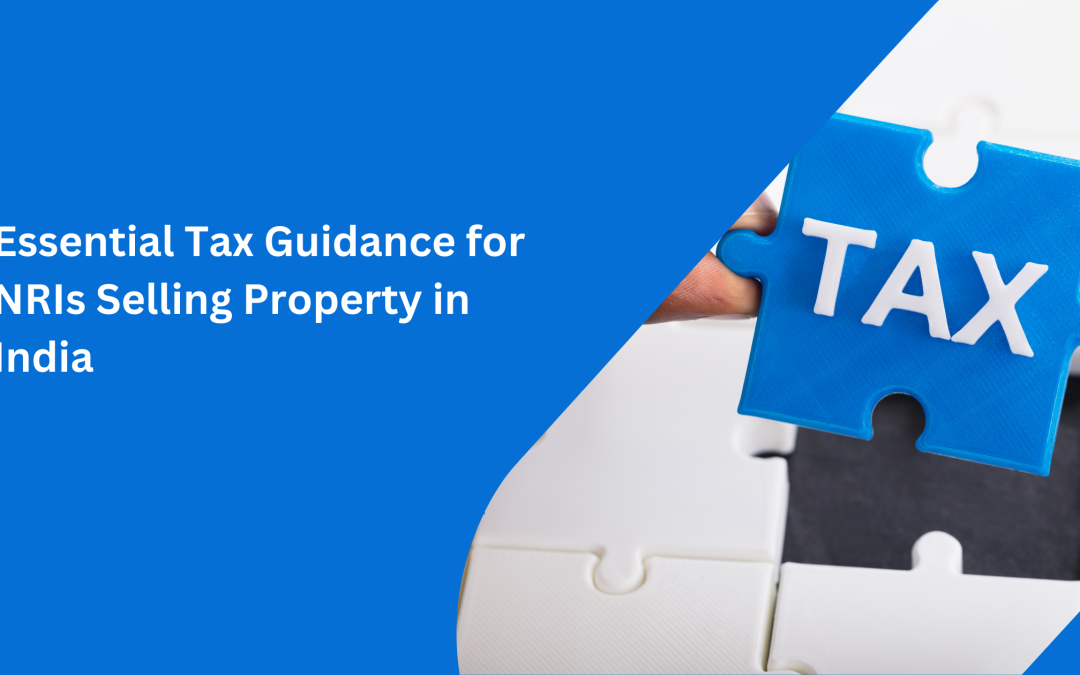Selling property in India as an NRI involves navigating a complex landscape of tax implications. Tax guidance for NRIs selling property in India is crucial for understanding these tax liabilities, ensuring compliance, and optimizing financial outcomes. This blog provides an overview of the capital gains tax structure, applicable exemptions, and the process for remitting sale proceeds.
Understanding Capital Gains Tax
When NRIs sell property in India, they must pay capital gains tax, which is categorized into two main types based on the holding period of the property:
Short-Term Capital Gains (STCG)
- Definition: If the property is sold within 24 months of acquisition, the gains are classified as STCG.
- Tax Rate: STCG is taxed at the NRI’s applicable income tax slab rate, which can go up to 30%.
Long-Term Capital Gains (LTCG)
- Definition: If the property is sold after holding it for more than 24 months, the gains qualify as LTCG.
- Tax Rate: For properties held for more than 24 months, Long-Term Capital Gains (LTCG) applies. Previously, LTCG was taxed at 20% with the benefit of indexation, which adjusted the cost of acquisition for inflation. However, starting from July 23, 2024, NRIs can no longer claim indexation benefits. The new capital gains tax rate for properties registered on or after this date is a flat 12.5%.
For further insights on the impact of these budget changes, refer to our blog on Impact of Budget Changes for NRIs.
Importance of Classification
Differentiating between Short-Term Capital Gains (STCG) and Long-Term Capital Gains (LTCG) is essential, as it directly impacts the applicable tax rates and the exemptions that can be availed.
Calculation of Capital Gains
To calculate capital gains accurately, NRIs should consider the following components:
- Sale Consideration: The total amount received from the sale of the property.
- Cost of Acquisition: The original purchase price of the property.
- Cost of Improvement: Any expenses incurred to enhance the property’s value.
- Indexation Benefit: Although indexation is not applicable post-2024, understanding its relevance for historical calculations is important. Depending on whether the new or old tax rules are applied, indexation will be implemented accordingly.
Formula for Calculating Capital Gains
Capital Gains=Indexed Cost of Sale Consideration−(Indexed Cost Of Acquisition+Indexed Cost of Improvement)
For a detailed understanding of capital gains tax and its implications for NRIs selling property in India, you can refer to this insightful blog: Capital Gains Tax for NRIs Selling Property in India.
Tax Deducted at Source (TDS) Requirements
TDS Rates for NRIs
NRIs are subject to Tax Deducted at Source (TDS), which is deducted by the property buyer before registration. The TDS rates depend on the property value:
- Properties under ₹50 lakh: 13% TDS
- Properties between ₹50 lakh and ₹1 crore: 14.3% TDS
- Properties between ₹1 crore to 2 crores: 14.95% TDS
- Properties between ₹2 crores to 5 crores: 16.25% TDS
- Properties above ₹5 crores: 17.81% TDS
TDS Certificate and Credit
After deducting TDS, the buyer must provide the seller with a TDS certificate (Form 16A). NRIs must obtain this certificate to claim a credit against their final tax liability when filing their Income Tax Return (ITR).
Utilizing Tax Exemptions and Deductions
Exemption under Section 54
NRIs can claim an exemption under Section 54 if they reinvest capital gains from the sale of a residential property into another residential property in India. Key points include:
- The new property must be purchased within one year before or two years after the sale.
- The property can also be constructed within three years from the date of sale.
- The exemption applies only to the amount of capital gains, not the entire sale proceeds.
Exemption under Section 54EC
Investing in specified bonds issued by government-backed entities like the National Highway Authority of India (NHAI) or Rural Electrification Corporation (REC) under Section 54EC allows NRIs to defer or reduce capital gains tax. The following conditions apply:
- The bonds have a lock-in period of five years.
- Investments must be made within six months of the sale or else must be deposited in the Capital Gains Account Scheme.
Key Steps for Remitting Sale Proceeds
When NRIs sell property in India, they must follow specific steps to remit the sale proceeds. They are allowed to remit up to USD 1 million per financial year, and proper documentation, including proof of sale and ownership, is essential. NRIs should also account for capital gains tax based on the property’s holding period and ensure that TDS is deducted appropriately. Additionally, sale proceeds must be credited to an NRO account before remittance.
For more detailed information on the remittance process, refer to this blog: NRIs Remitting Property Sale Proceeds from India.
Conclusion
Understanding tax guidance for NRIs selling property in India is essential. By knowing how to classify capital gains, calculate tax liabilities, and utilize available exemptions, NRIs can minimize their tax burden and ensure a smooth transaction process.
For personalized assistance and in-depth guidance on navigating the complexities of property sales and tax implications, Brivan Consultants is here to help. Our team specializes in NRI taxation and can provide tailored advice to help you make informed decisions regarding your investments in India. Contact us today for expert support!

